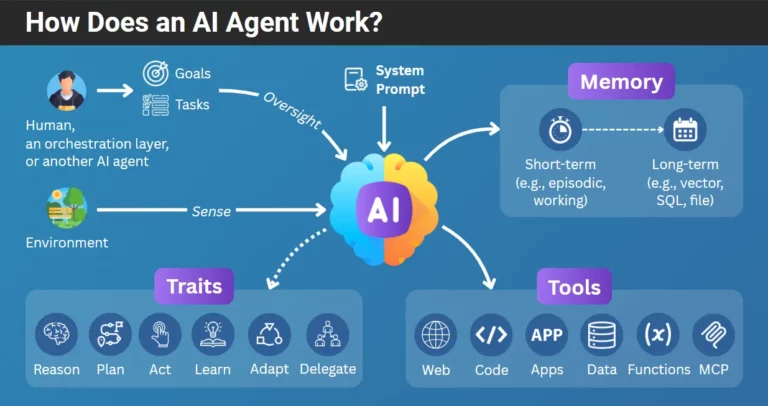
Introduction
E-commerce is no longer just about having a sleek website and a secure checkout. In 2025, the winners in the online retail space are those who leverage artificial intelligence (AI) to anticipate customer needs, personalize the buying journey, optimize inventory, and provide a frictionless experience from click to delivery.
Whether you’re running a niche online store or scaling an international marketplace, AI has become essential for improving performance and profitability in e-commerce. In this article, we’ll explore the most impactful AI use cases, tools, and strategic tips for staying competitive.
1. Personalization at Scale
AI-powered recommendations
AI doesn’t just suggest “similar items.” It understands browsing behavior, purchase history, product affinities, and even time of day or device type. The result: real-time, highly personalized recommendations that drive up average order value (AOV) and conversion rates.
Dynamic website content
From homepage banners to product descriptions and search results, AI adapts content based on user profiles. A returning customer sees what they’re most likely to buy next, not what you want to push generically.
Personalized pricing & promotions
AI can segment customers and offer personalized discounts, loyalty points, or shipping perks to drive retention and lifetime value.
2. Smarter Inventory & Supply Chain Management
Demand forecasting
AI analyzes sales trends, seasonality, external events (weather, holidays, global supply chain disruptions), and real-time shopping behavior to predict stock needs with high accuracy.
Automated restocking
Machine learning models can automate when and how much to reorder from suppliers, reducing overstock and avoiding stockouts.
Fraud detection in logistics
AI monitors unusual delivery patterns, location inconsistencies, and suspicious purchasing behavior to prevent fraud and reduce return costs.
3. Intelligent Search & Visual Discovery
AI-enhanced search engines
Traditional keyword search is giving way to semantic search—AI understands what the user means, not just what they typed. This leads to faster, more accurate product discovery.
Visual search
Customers can upload a photo and find matching or similar products instantly, powered by image recognition models.
Voice search
With the rise of mobile commerce and smart assistants, AI enables voice-powered product search and navigation with natural language understanding.
4. Automation in Customer Interaction
Conversational commerce
AI chatbots guide users through product discovery, answer questions, offer size or fit recommendations, and even complete purchases inside the chat window.
Smart email & retargeting campaigns
AI generates subject lines, product grids, and sending times personalized to each user—improving open rates, click-throughs, and revenue per email.
Cart abandonment recovery
Instead of one-size-fits-all emails, AI can trigger personalized reminders with product images, urgency messaging, and relevant alternatives.
5. Fraud Prevention & Payment Security
- AI analyzes purchasing patterns in real time to detect anomalies, block fraudulent transactions, or flag suspicious behavior for review.
- AI is also used for identity verification, flagging mismatches in shipping/billing info or bot activity.
6. Tools Powering AI in E-Commerce
Some top tools and platforms in 2025 include:
- Shopify Magic (built-in AI across search, email, and storefronts)
- Adobe Sensei (personalization and content AI for enterprise retail)
- Rebuy Engine and Nosto (recommendation & personalization tools)
- Klevu (AI-driven smart search)
- Kustomer or Tidio (AI chatbots with CRM integrations)
7. Ethical & Operational Considerations
Data privacy
Collecting customer data must follow GDPR or CCPA standards. Clear opt-ins, anonymization, and secure storage are mandatory.
Bias in recommendations
Poorly trained AI can reinforce limited exposure—showing more of the same and ignoring diversity. Train your models with diverse and inclusive data.
AI ≠ replacement of human support
AI augments the experience, but for high-ticket or sensitive purchases, human touchpoints remain critical.
8. Success Stories
- LunaStyle, a fashion e-commerce brand, increased average order value by 34% after introducing personalized recommendations and visual search.
- PetZone, a mid-sized pet supply store, used AI to reduce cart abandonment by 45% through automated retargeting and smart email flows.
- TechNest, a consumer electronics seller, implemented AI-driven demand forecasting and reduced warehouse storage costs by 27% in six months.
Conclusion
AI in e-commerce is not just a trend—it’s the new foundation of how modern online retail operates. From personalization and logistics to customer support and fraud prevention, artificial intelligence offers e-commerce brands the ability to grow smarter, faster, and more profitably. The key is to implement AI strategically—balancing automation with human oversight, and always keeping customer experience front and center.







